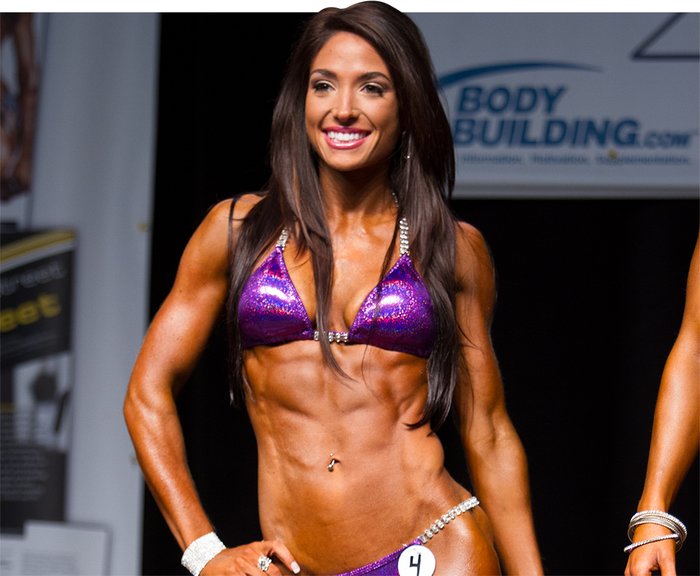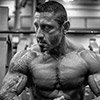Whether you compete or not, the fall and winter months have long been designated the world over as the bodybuilder's "offseason." The term carried over from other sports like football and baseball, when athletes take time off from practices and games. But honestly, the term is a misnomer, because competitive or serious recreational bodybuilders never really stop working—we just shift our focus.
No more shredding it up for the stage or beach; it's time to make more strategic improvements to your physique. Maybe you want more overall mass, or to improve a specific part of your body. Using your offseason properly can be the difference between continual improvements and looking the same year in and year out.
Whether you compete or not, your goal as a bodybuilder should be to make the absolute best of every time of year. To that end, here are six rules to help you take advantage of the offseason and emerge into the warmer months with a stage-ready physique.
1. Set Specific Goals and Write Them Down
Your first order of business in the offseason should be to draw up your game plan. As the saying goes, "If you fail to plan, you plan to fail." It is critical that you take the time to write down your plan so that you have a record of what you want to achieve. Otherwise, you may end up flailing about and hoping for the best, which is just like hopping in your car and driving around with no destination: You just end up wasting time and gasoline.

Think about what you want to improve about your physique. Do you want to work on one part of your body? Or maybe you want to add more overall size. If you want to add size, set a realistic goal for how much muscle you want to add over the next 4-5 months. If you're just starting out training, you might be able to gain 10-20 pounds in five months, most of it muscle. If you've been training for 5-10 years or more, reel back your expectation to maybe 5 or 10 pounds.
This might not sound like much to people who've based their expectations on misleading before-and-after ads, but results like those aren't realistic.
If you've noticed that one of your muscle groups is lagging behind the rest of your body, come up with a plan to train these weaker areas more often and with more volume and intensity. You can be extremely specific here, such as setting a goal of adding one full inch to your arms or two inches to your thighs. The more specific your goals, and the more passionate you are about achieving them, the greater your likelihood of success.
2. Don't Fall Into the Bulking Trap
This probably should have been at the top of the list, because "bulking up" is by far the most frequently violated rule. I ought to know; I spent every offseason for about 15 years gorging on loads of bad food—along with the good stuff—while watching those ever-larger numbers tilt the scale.
However, I was kidding myself: No, my face wasn't starting to look like a chipmunk. That jelly roll around my midriff definitely wasn't getting bigger.

It's easy to fall into the trap of bulking. Technically, any kind of added weight will give you more bulk. But unless you're getting accurate body-fat tests every couple weeks or so, you can fool yourself into thinking that most of the weight you're gaining is muscle mass, with maybe just a little bit of fat. It used to perplex me years ago when I would get heavier and heavier each bulking season but still weigh roughly the same every time I dieted down. I couldn't figure out what happened to all that "muscle" I'd gained. I told myself I must have overdieted and lost all the weight. In reality, I had gained a little muscle mass and a lot of lard.
Arnold used to say that true bodybuilders should always be able to see their abs and serratus. That's a great general guideline. Lee Haney told me once that he never gained more than 15-20 pounds over his contest weight—and this was a man who competed at 250 pounds.
If you compete—or just look your best—at 180 or 200 pounds, you have no business gaining 30-40 or more pounds in the offseason. If you start tilting the scales and getting those chipmunk cheeks, tighten up your diet and kick in some more cardio. It won't hurt your muscle gains at all, and it will nip your fat accumulation in the bud.
3. Don't Stay Too Lean
This rule doesn't apply to many people. But I include it because I've known bodybuilders preoccupied with staying as close to contest condition as possible year-round.

These were not fitness models who had to be ready for a photo shoot with only a couple days' notice. They were just men and women who craved the attention and accolades they got from being perpetually ripped, and couldn't imagine losing their precious cuts for even a couple months. I even know one guy who had a custom license plate that said "STYRPT." Needless to say, none of these people ever learned how to develop a better physique.
There are two very simple mathematical formulas all bodybuilders need to understand and apply: If your goal is to lose fat, take in fewer calories than you expend. If you want to gain muscle, take in more calories than you expend. Finding out how much you as an individual can play with that baseline amount of calories is where the real work starts.
4. Work on Strength
Lord knows I love eight-time Mr. Olympia Ronnie Coleman. But his smash-hit training video The Unbelievable warped the minds of millions of bodybuilders around the world. In the video, Ronnie uses astoundingly heavy weights—the famous 800-pound squats and deadlifts, 200-pound dumbbell presses, 500-pound barbell rows, and so on. And he does it just a few weeks out from competing in the Mr. Olympia contest.

Ronnie's video gave many bodybuilders the terrible idea that the final stage of contest prep is the ideal time to try to get stronger by pushing and pulling maximum weights. No, no, no!
When you're getting ready to compete, you've lowered your carbs and calories. You're doing a lot more cardio than usual. You're probably exhausted from poor, fragmented sleep. And your joints feel like they're ready to break.
Put this all together, and you have a recipe for injury. Many bodybuilders do, in fact, get hurt this way. Instead, do your heaviest lifting and push your numbers in the offseason, when your body has ample fuel and is in a far better position to recover fully and make gains.
5. Use More Intensity Techniques
This rule is closely related to the last. Intensity techniques like forced reps, dropsets, rest-pause, supersets, and giant sets are indeed powerfully effective at taking your muscles into unaccustomed zones where they have no choice but to adapt and grow.

It needs to be emphasized, however, that muscles grow only when they are able to fully recover from a given workout and the stresses you subject them to. Intensity techniques amplify that stress above and beyond typical straight sets taken to failure. Think about it: When is your body in an optimal state to recover from training? It's when you're eating plenty of good food and getting plenty of good rest—in other words, during the offseason.
Nevertheless, most bodybuilders continue to throw in more intensity techniques when they are dieting—when they're eating less and sleeping less due to the deleterious effects a racing metabolism has on sleep quality. By all means, do your heavy straight sets in the offseason. But if you also like to incorporate intensity-boosting techniques, do them when your body is in the best position to profit from them.
6. Set a Date to Start Cutting
Last but not least, set a time limit on your offseason. Our bodies eventually adapt to just about anything we throw at them. But once we reach our limit, results can slow to a crawl, then grind to a halt. That's why after dieting for more than, say, 10-12 weeks, we discover that fat loss becomes tougher and tougher to achieve.
The same principle holds true with the offseason. After a while, your body will get used to eating copious amounts of food and training heavy. You can keep banging your head against a wall and expecting a different result. But as people love to point out, that's the definition of insanity.

Instead, put a deadline on your offseason. Use the start of a new month such as March or April to mark the end of an offseason phase and the start of a cutting phase, when you really clean up your diet and bump up the cardio. Your goal from that point on is to maintain the muscle you built over the offseason, while continuing to lose fat.
It might seem contrary to the core meaning of bodybuilding to intentionally stop focusing on gains for even a day, much less for 3-4 months. But, believe me, doing so will effectively "reset" your metabolism. Once you return to higher calories and reduce your cardio volume and intensity, your newly reset body will begin gaining once again.
None of these rules will be hard for you implement. Apply them, work hard, stay focused and motivated, and I promise you that your body will show the results next spring and summer.

